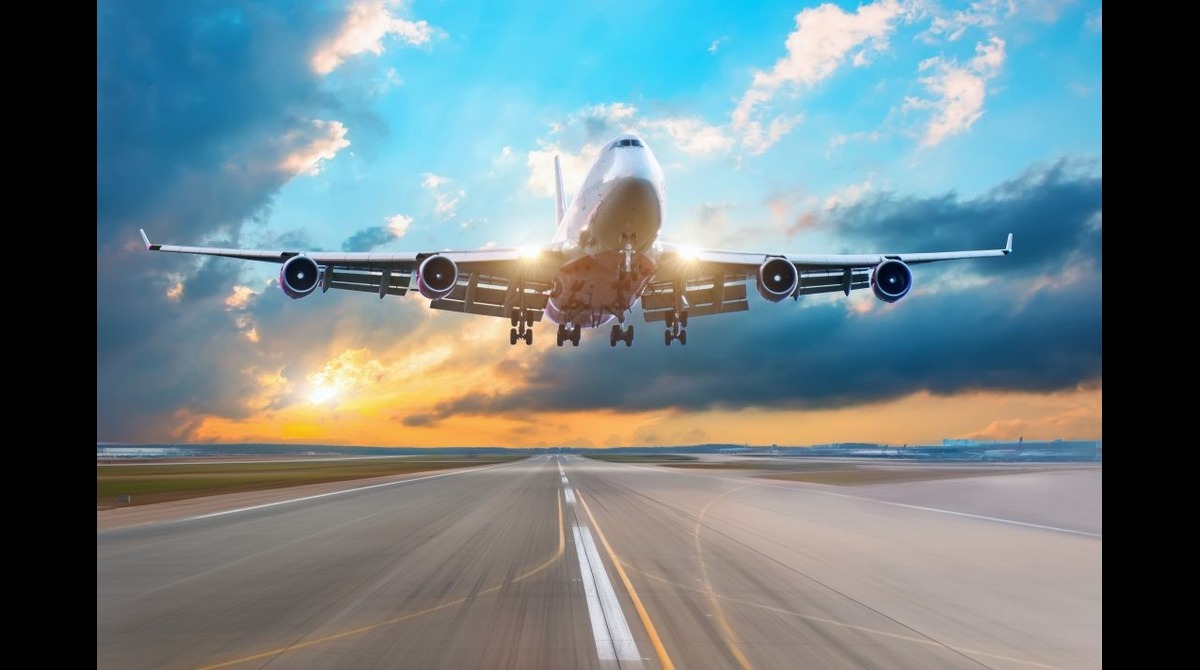The idea of flying has captivated humans for centuries. The actual creation of the airplane is credited to Orville and Wilbur Wright also known as the Wright brothers. Their groundbreaking moment occurred on December 17 1903 in Kitty Hawk, North Carolina. It was there that they successfully piloted the controlled aircraft that could sustain flight even though it was heavier, than air.
Their aircraft, famously called the Wright Flyer was a biplane made with a frame covered in fabric and powered by a 12 horsepower engine. It had a wingspan of 12 meters. Weighed around 340 kilograms. During its flight Orville took control as the pilot while Wilbur guided it from the ground. The first flight covered a distance of 36 meters. Lasted for about 12 seconds – an incredibly significant milestone in aviation history.
The remarkable accomplishment of the Wright brothers forever changed transportation and exploration. It marked the beginning of flight. Sparked advancements that would revolutionize how we perceive and travel through the skies.
Since times humanity has dreamed of taking to the skies. Stories like that of Icarus from mythology have captured our imagination. It was through achievements like those made by the Wright brothers that we truly began our incredible journey, into conquering aviation.
In todays world air travel has evolved from being a aspiration, to an everyday occurrence opening up a realm of incredible experiences and endless opportunities.
The Marvel of Flight
Flying is not, about the technicalities of moving through the air. It’s also about the enchantment of going beyond limits. When you step onto an airplane it’s not a means of transportation; it’s like entering a gateway that takes you to places, diverse cultures and exciting adventures. Looking down from above where clouds create patterns, on the landscape beneath is truly awe inspiring.
Unraveling the Mysteries of Aviation
The world of aviation is a combination of engineering, physics and human creativity. From understanding lift forces to the complexities of turbine engines flight showcases the ingenuity of mankind. The careful organization involved in planning every flight, managing air traffic and the skill of pilots harmoniously unite to create an experience that’s not safe but also truly remarkable, as a testament, to human accomplishment.
Overcoming Boundaries
Air travel has had an impact, on overcoming obstacles whether they are physical or symbolic. It has linked off corners of the globe facilitating communication, trade and mutual comprehension. Through air travel individuals, from continents have come together forming connections that go beyond limits.
Future Frontiers
As technology continues to progress the future of air travel presents prospects. Ideas such, as journeys and the advent of space tourism are within reach offering a revolution in our perception of flying. Advances, in materials, propulsion systems and navigation are expected to usher in an era of more sustainable flights that prioritize efficiency while being mindful of the environment.
Phases of Flight: Landing, Cruise, and Takeoff
Oh, the different stages of a flight! Imagine this; a plane all set to take off. It all begins with the moment of takeoff when you hear the engines roar and feel the push, in your seat. That’s when the aircraft lifts off from the ground leaving Earth behind.
Next comes the cruising phase, which is like the part of the journey. The plane finds its rhythm levels out. Glides smoothly through the sky. It’s similar to hitting the road on a drive except you have clouds above and an even better view.
Lastly there’s the landing, which’s like a finale. The plane descends gracefully gently touching down on the runway as it returns to Earth. It’s that moment when you hold your breath slightly as you feel the wheels make contact and sense the brakes engaging.
Each phase carries its atmosphere and excitement. Takeoff feels like revving up an engine; cruising is akin to finding your stride; while landing provides that satisfying conclusion to an adventure. These phases together make a flight feel like a captivating story, with a beginning, middle and an unforgettable ending.
Conclusion
The incredible tale of how flight came to be’s a testament, to determination, creativity and the relentless pursuit of what was once thought impossible. From the courageous flight of the Wright brothers to the awe inspiring marvels that now grace our skies, the evolution of aviation stands as a shining example of progress.
The invention of airplanes not revolutionized travel but also expanded our horizons in ways. It transformed our world into an awe inspiring place. The humble beginnings and profound impact of the Wright Flyer symbolize ambition and daring.
As we reflect on that flight at Kitty Hawk it serves as a reminder that even the extraordinary achievements often start from modest origins. The legacy of that flight continues to resonate in the vastness of our skies inspiring generations to strive for heights explore territories and embrace the spirit of innovation.
The journey from that moment in 1903 to todays advancements in aviation is evidence of potential and an unwavering dedication to progress. Each passing day unveils marvels through flights—bridging distances between people connecting cultures—. Reminding us all that the sky’s not a limit but rather a gateway, to limitless possibilities.



